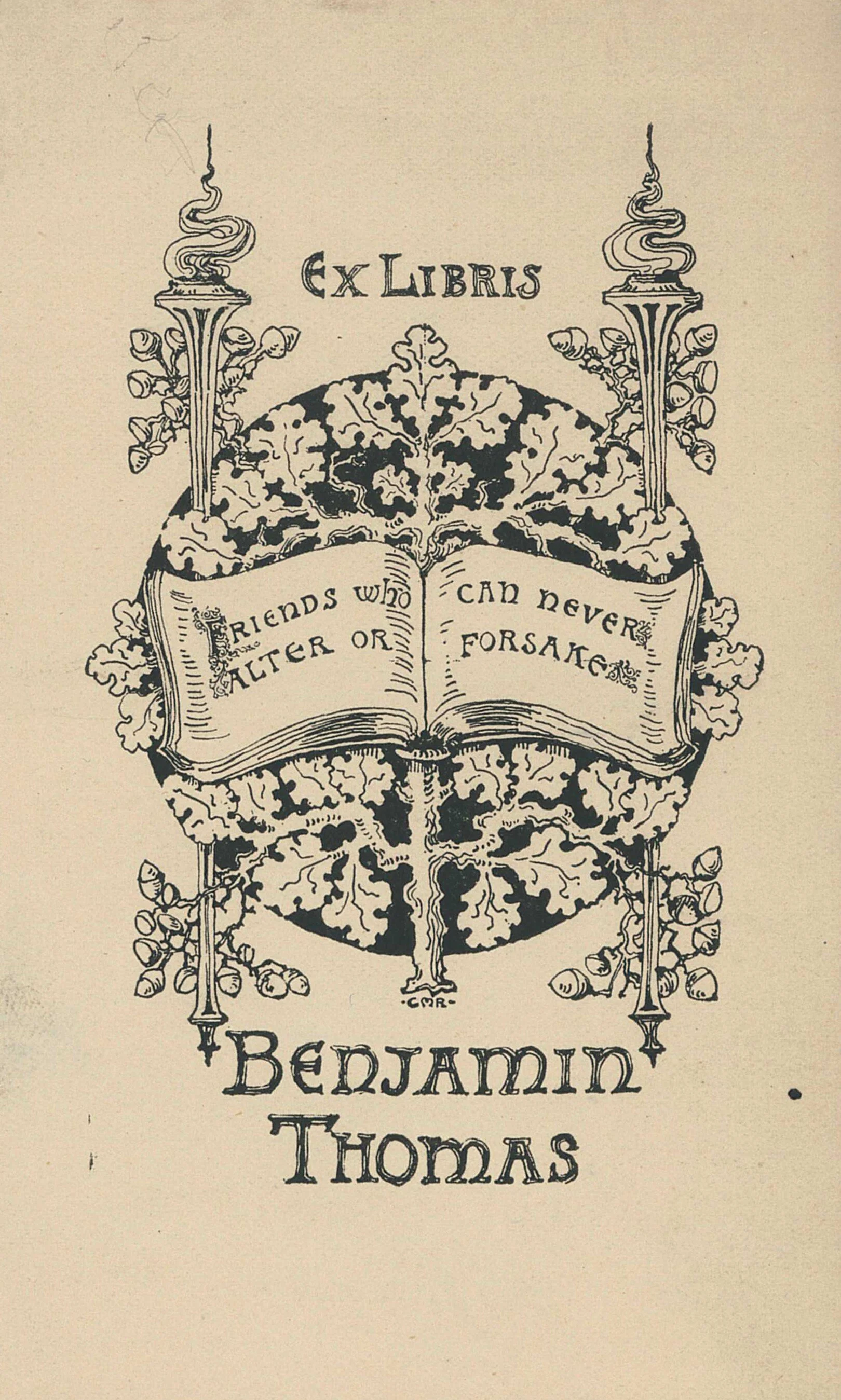Hover Over Image for Caption

CHRISTIA MARIA READE (1868 – 1939)
Christia Maria Reade was born to Josiah Torrey Reade and Christia Murray Reade and lived most of her life in Lombard, Illinois at 15 West Maple Street. She studied at the Art Institute of Chicago Department of Decorative Design in the late 1880s and quickly earned a reputation as one of the finest artisans, metalworkers, and jewelers of the period.
A very creative and skilled artist working in copper, brass, silver, stained glass, and jewelry, she also designed and collected many bookplates and ventured into creating lampshades and fixtures and other architectural ornaments.
In 1897, Reade opened a studio in the Marshall Field Building on State Street and co-founded a collaboration of artisans called the Krayle Company and Workshops. Reade also kept a studio in the Fine Arts Building (FAB) from 1902 to 1929. Both buildings offered affordable access to other arts and crafts workers that resulted in a vibrant collaborative culture of art and entrepreneurship.
The FAB was transformed in 1898 into a modern arts and crafts incubator, with a central atrium, several auditoriums and dozens of studios housing over 200 artists, including painters, metalworkers, sculptors, jewelers, leather workers, musicians and writers, becoming a “be there or be square” hub of the Chicago Arts & Crafts Movement as well as headquarters for a rapidly expanding musical and literary culture.
Social activists were present in the FAB as well, among them the Chicago Woman's Club and the Illinois Equal Suffrage Association.

Bookplates are decorative printed labels affixed to the inside front cover of a book denoting ownership when personal libraries were common among those who could read and who could afford to buy books. The history of bookplates goes back to 14th century Germany with the first dated bookplate to 15th century Germany.
These early examples are known as heraldic style, with family crests and mottos being used for the art. Various styles were used during different periods. An article from the Chicago Tribune, 13 Jun 1886, declared that “Germans had the oldest, the French the most artistic, and the English the most hideous book-plates.”
American bookplates date from the original thirteen colonies with many famous names represented.
public domain

This book plate was created for Marion Lord Chandler and features their personal motto “Friends who can never alter or forsake” Chicago Tribune, c. 1898

This bookplate for Benjamin Thomas features the motto “Friends who can never alter or forsake”

This bookplate was created for Emma Pratt and features the Latin motto ‘Ex Libras Fidelitas”Chicago Tribune, c. 1898

This is the bookplate for Josiah Reade. Josiah Reade was the artist’s father. He was a member of the First Church now know as Maple Street Chapel. Chicago Tribune, c. 1898

This bookplate was created for Julia Harwood Caverno. She was a member of the First Church and her bookplate features a steeple.
Julia Harwood Caverno Papers, Smith College Archives, CA-MS-00043, Smith College Special Collections, Northampton, Massachusetts.

This is a bookplate for the Susan E. Davies Bible Memorial. This memorial was set up so each graduating member of the First Church School in Lombard received a bible as a present.
Susan E. Davies Bible, First Church Archive.

The Little Margaret Library was housed at the First Church of Lombard. Members were able to check out books and return them to the church. Many of the books at First Church would form the beginning collection for the Helen M. Plum Memorial Library now located up the street.
Book from the Reade Book Collection, LHS.

Christia created this bookplate for her Aunt, Maria Hawes Reade. Chicago Tribune, c. 1898

Bookplates contain symbolism. The Tree of Knowledge offers insight and protection on this book plate for Riverside Illinois Public School in Memorial of Adolph Seckel. Riverside Public Library

This Tree of Knowledge is found on the bookplate for Frank M. Elliot. Chicago Tribune, c. 1898

In Helen Viles bookplate, the Tree of Knowledge is stylized but still represents a search for information.

Bookplates were not just for individuals. Businesses used them too. This bookplate is for the Reade Trautmann Studio and was used as an advertising opportunity.

Books themselves are gateways to other worlds and lives and this bookplate reflects this. This bookplate for Kenneth Symonds Ramsay features a towering ship.

Similar to the one before, the book plate of Martin and Ruth Gridley draws comparisons to books and adventures.
Rare Book and Manuscript Library, University of Illinois at Urbana-Champaign

George Bradford Dutton’s bookplate features a ship sailing for tales unknown.

Similar to the Tree of Knowledge, the Lamp of Knowledge was a popular motif for bookplates. Seen here on the bookplate for Julia Dutton. Illinois Digital Archives

The Lamp illuminates the reads path to discovering something new. This bookplate belonged to Gertrude Ellen Dolese.

The Lamp of Knowledge adds a mystery to the stories found within the book’s pages, and the idea the reader will be reading late into the night. This bookplate was for Wirth Stewart Dunham.

Creating a bookplate took time. Christia Reade created several drafts of the bookplates as these are reflections of the person they are for. This is a draft of Ellen Crosby’s bookplate with options of different greenery around.

This drawing is for the Leonard Abbot Jenkins bookplate.

This is a draft of the bookplate for Helen Harris Aldrich























